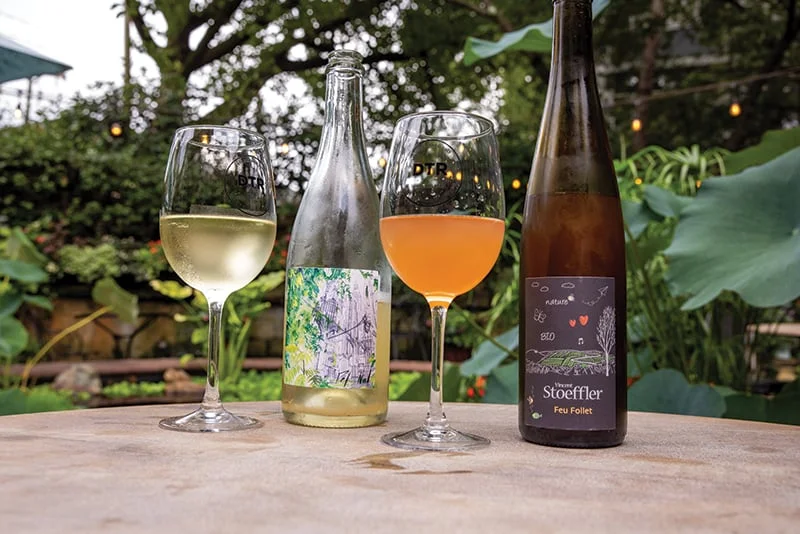
Is Natural Wine a Headache-Free Elixir?
I adore a glass of red wine. But as I’ve aged (heh), my favorite adult beverage often leaves me with a raging headache. Lately, I’ve seen a lot of sponsored posts for natural wine on my social media feeds—I’m convinced these devices are listening to us—and celebrities like Cameron Diaz promoting their own labels and touting its health benefits. It’s organic, and it’s not supposed to cause red wine headaches. That got my attention.
But is natural wine truly better for you? Is the “no headache” claim legit? Most important, how does it taste?
Natural winemakers forgo many of the additives found in commercial wines, like sulfites, a preservative that prevents oxidation in the wine and takes much of the popular blame for the headaches. “In the vineyard, it’s all about using as little of the human hand as possible,” explains Jaffer Kovic, owner of Dilworth Tasting Room. “Many wine drinkers call this category ‘hippie wine.’ It’s the purest form of wine out there. The grape does its job of tasting like the wine.”

Ideally, Kovic says, natural wine should have a “cleaner, natural taste.” It’s not uncommon for natural wines to draw complaints of a vinegar aftertaste, but that’s the product of exposure to oxygen from fermenting too long. Don’t be alarmed if your natural wine looks cloudy, though. That’s just because it’s unfiltered. And sulfites likely aren’t what causes your headache. All wine contains sulfites; even naturally occurring yeast releases them to block bacteria. Without sulfites, wine would turn into vinegar—and if any wine tastes like vinegar, throw it out.
“Somms hear it all the time on the floor,” Kovic says. “A guest will let us know they’re allergic to sulfites and they would like an organic wine.” But only 1% of the population has a sulfite allergy, according to the FDA. Your red wine headache probably stems from dehydration or tannins, a naturally occurring chemical in grape skins. Natural wine is generally lower in alcohol content than conventional wine, which may explain why people report less head throbbing after they imbibe.
Kovic says he’s noticed more natural wine sales in the past few years, but as demand grows, prices will inevitably go up. “I would say a great bottle of natty wine on a store shelf around $25 is a good start,” he says. “If you find one in a restaurant around $45 to $60, I would jump on it.”
As with any wine, you won’t know for sure if you like a particular label until you try it. I went to Dilworth Tasting Room to investigate. The red had sold out, but DTR had two whites: L’Un des Sens Chenin Blanc, a medium-bodied white with fruity notes, and Nature’s Revenge, a fizzy chardonnay. I chose the latter. On a sweltering August night, it was immensely refreshing—like a tart prosecco. I didn’t detect any cloudiness, and I got neither a vinegar aftertaste nor a raging headache the next morning.
I’m not inclined to purchase a case of Nature’s Revenge. But I certainly won’t rule out the red variety, or any other hippie wine, the next time I’m out.






